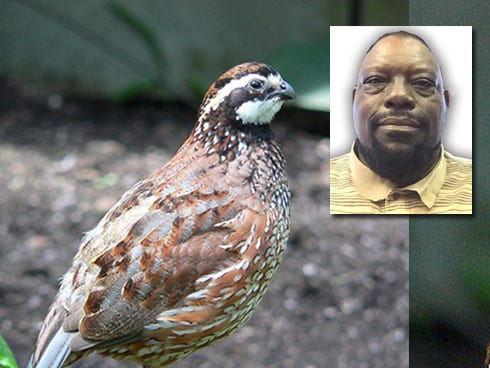
There may be no game bird more enjoyed or more studied than the bobwhite quail.
Hunters, bird watchers, farmers, suburbanites — it seems everyone likes to see a covey of quail and hear the distinctive “bob…white” call.
But the bobwhite population has been on a downward spiral. In the past 35 years, the northern bobwhite quail population has plummeted 70-90 percent in some areas, according to the United States Department of Agriculture’s Natural Resources Conservation Service Wildlife Habitat Management Institute.
What happened?
Wildlife experts point to degradation and loss of quail habitat as major factors.
Farming methods changed rapidly after World War II — fences and hedgerows were eliminated as fields grew larger. Pastures that had been choice quail habitat were cleared of brush and resulted in crops that don’t provide the food or cover quail need.
Herbicides and insecticides became widespread control methods for weed and insect pests on agricultural lands. But those same insects and weeds are essential to quail’s diet.
So, for the past 40 to 50 years, as brush was cleared and weeds were controlled, fields became larger, pasture makeup changed, forest became denser and quail lost much of their prime habitat. Gone was much of the diversity of “early successional” (grasses and herbs, shrubs and young forest), and once-common fringe or “edge” habitat.
But this bird’s revival is promising.
A southeast study group has developed a habitat restoration plan to restore populations to 1980 levels, with a goal of improved habitat on millions of acres to help produce 2.7 million new quail coveys.
Congress included in the previous and current, 2014 Farm Bill provisions to improve northern bobwhite quail habitat on privately owned working lands.
The Natural Resources Conservation Service has locally awarded cost-share contracts over the years to qualified landowners to install conservation practices on cropland, forest and pasture lands.
In addition, conservation practices such as prescribed burn, fire-breaks, brush management, planting native, warm-season grasses and reducing agriculture pesticides and herbicide use help with quail habitat management.
Darryl L. Williams is a district conservationist with the United States Department of Agriculture’s Natural Resources Conservation Service, 938 N. Ferdon Blvd., Crestview. Call him at 682-3714, extension 109.
Male and female bobwhites select a nest site and build a nest together. Both sexes are known to incubate eggs and brood young chicks.
UPCOMING
The United States Department of Agriculture’s Natural Resources Conservation Service and partnering agencies will host a free quail management workshop.
Registration starts 8 a.m. March 31 at Gum Creek Lodge, 5899 Buckward Road, Baker, and the workshop ends at 3 p.m.
Lunch will be served, free of charge, to those who register by March 25. Call Billie Clayton, 767-3634, to sign up.
DID YOU KNOW?
This article originally appeared on Crestview News Bulletin: WILLIAMS: The plan to save the bobwhite quail
